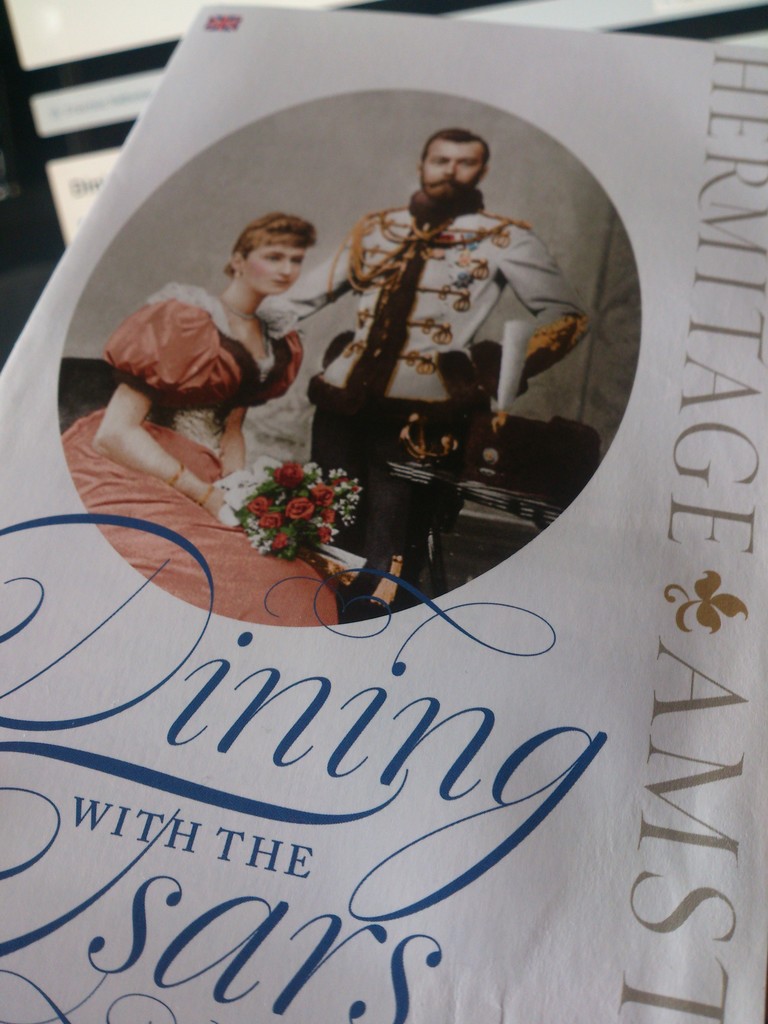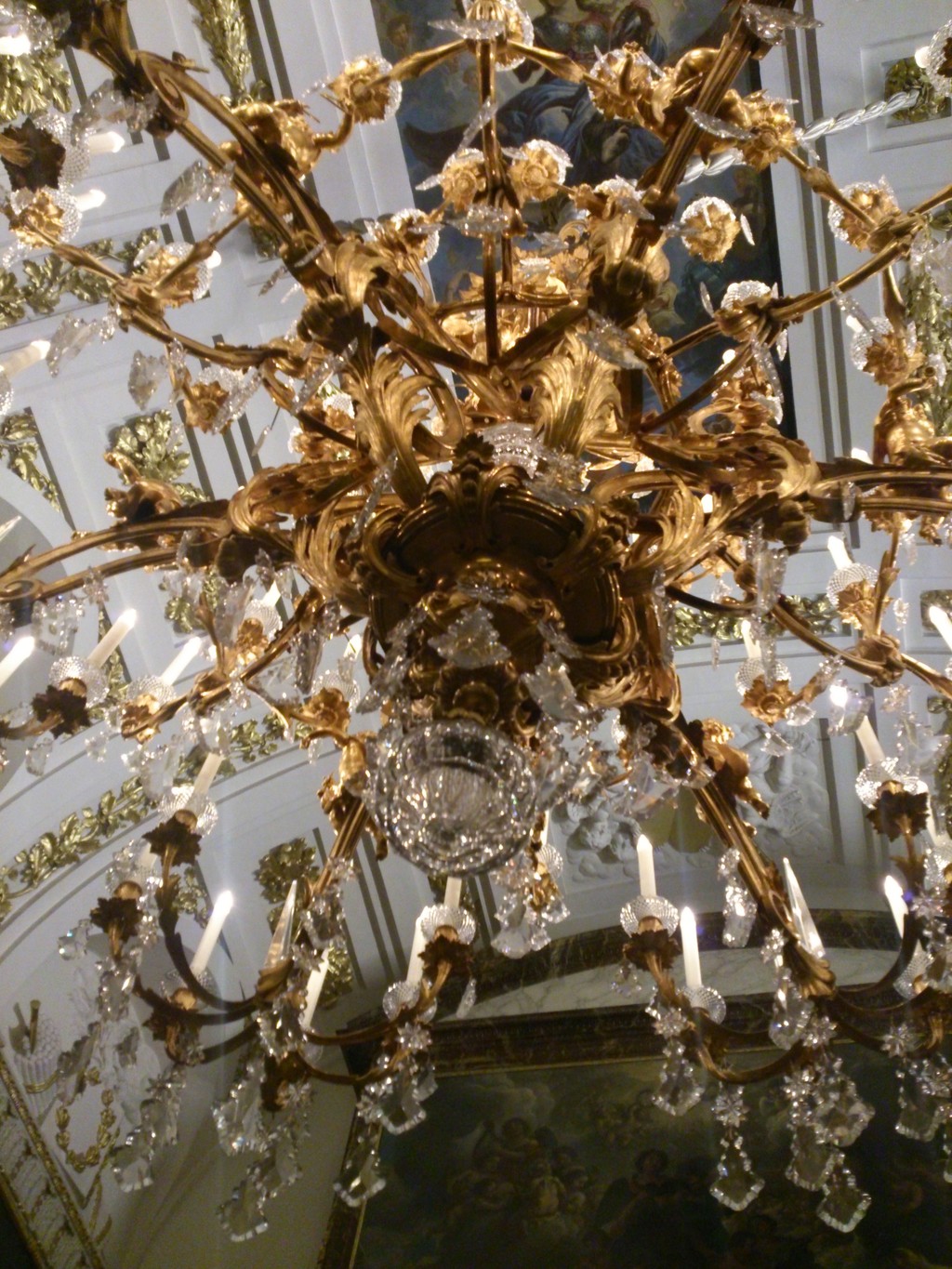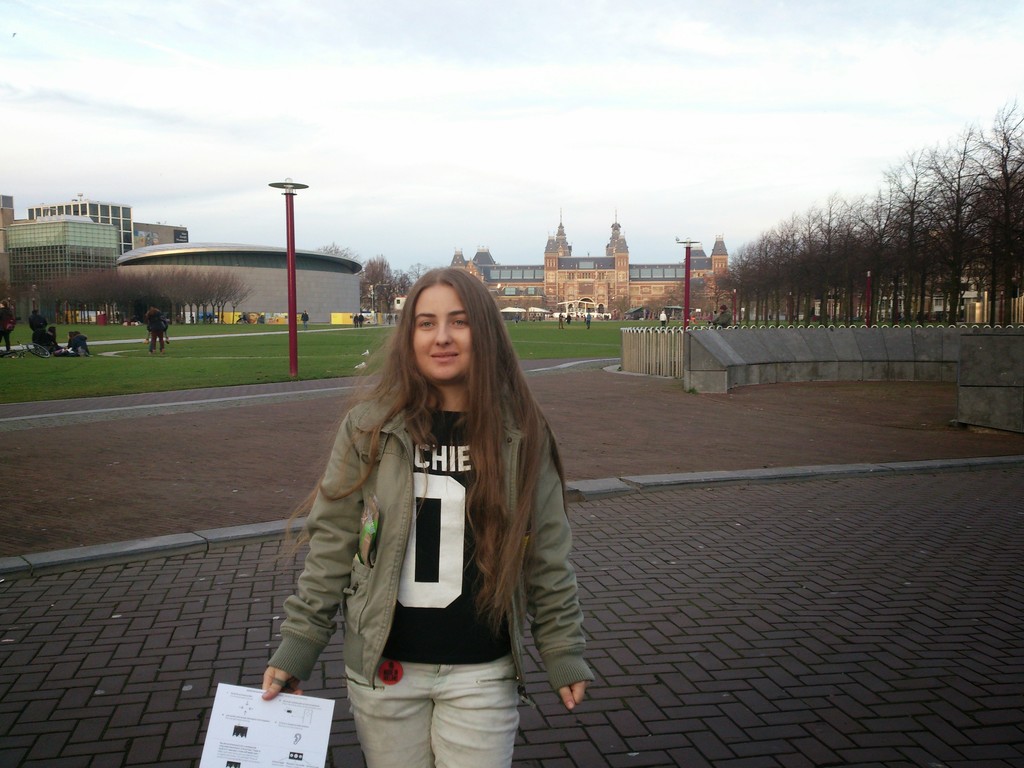Dining with the Tsars

So we heard there was an exhibition brought all the way from the Hermitage to Amsterdam. And it was fascinating to see all the great stuff Romanovs had.
"In early 1917 the Romanov Dynasty had 65 members, 18 of whom were killed by the Bolsheviks. The remaining 47 members were exiled abroad. "
Who would not have been delighted to dine at the Winter Palace? “A personal invitation from the Tsar, thousands of guests dressed in their best finery, the elegant etiquette of court protocol, hundreds of dishes served with the finest wines and the loveliest painted porcelain service. Back to a world of magnificent feasts with carriages waiting at the palace gates, costly jewels sparkling in the candlelight, and stolen glances quickly concealed behind fluttering fans. ”
The Romanovs’ Banquets
The Romanovs’ Banquets were famous for their gorgeousness. The banquets and balls of the imperial court were the most lavish and spectacular in all of Europe. Every effort was made to exhibit the power of the Romanovs and impress the guests with splendor. Visitors were able to see exhibiting tables magnificently laid with world-famous eighteenth- and nineteenth-century services from the State Hermitage Museum in St. Petersburg. So, that’s how guests of Tsarina Catherine the Great or Tsar Nicholas II felt when they got invited to the Romanovs’ banquets and had a chance to meet the royals and wander in the halls full of splendid furniture and paintings.
You could see the famous porcelain from Russia. So, once the secret to producing porcelain was discovered in Europe in the early eighteenth century, its popularity rocketed.
Every banquet had an important objective: to dazzle the guests, of course! It dazzled the guests with hospitality. "Perfume burners and exotic flowers dispersed aromatic fragrances and the champagne flowed freely. " The absolute highpoint of the evening was the dessert. It was often served with impressive sugar-cake creations of entire landscapes, buildings and fountains. This was the most extravagant culinary masterpieces along with the fricassee and others. Banqueting culture reached its zenith under the reign of Catherine the Great in the eighteenth century. She was called Queen of Feasts, because there were so many guests and so much food served at the banquets. The last Tsar Nicholas II and his wife Alexandra also organised the balls, and they were the largest ones, but with their reign ending, the banquetes ended too.
The exhibition was incredible. Entering it, you would forget all the 21-st century's greatness, and you would want to be a person, who would be invited to such banquets. The rooms were splendid! The decorations were fascinating. The tables were laid with some amazing things and the porcelain _ OMG! This was something unbelievable. The exhibition lived up to my expectations and beyond, I can say. It was remarkable. I didn't expect it to be this great. The people organising everything had done such an incredible job, that even someone who doesn't like porcelain or Romanovs or whatsoever, would feel different about these things.

The porcelain
The porcelain was something, that I can hardly describe with words. You look at it and wonder how can someone paint such small stuff in such detail. You look at it and it seems so fragile and vulnerable, that you want to hold it and never let go. It's a strange feeling, I know, and if you have been in the Hermitage or on this exhibition in Amsterdam or anywhere, where such porcelain was exhibited, you will know what I am talking about.
The finest pieces were from the dinnerware collections of Catherine the Great. There were the Cameo Service (Sèvres, Paris, exhibited for the first time with silver gilt flatware), the Green Frog Service (Wedgewood, England), and the Berlin Dessert Service (Königliche Porzellan-Manufaktur Berlin). The surprise final exhibit was the service, which was given to Stalin by the Hungarian people in 1949. The service has never been used or exhibited before.
The exhibition was opened on September 6, 2014.
The really great thing about the exhibition was that there was a free wi-fi. Of course, everyone asks about wireless network in these days, well, it’s 21-st century, it’s not possible without WiFi… Really?! Come on, people. Anyway, there was also a museum shop, where you could see many things and buy many things including jewelry, cookery books, porcelain items, postcards, etc.

Photo gallery
Content available in other languages
- Español: Cenando con los Tsars
Want to have your own Erasmus blog?
If you are experiencing living abroad, you're an avid traveller or want to promote the city where you live... create your own blog and share your adventures!
I want to create my Erasmus blog! →



















Comments (0 comments)